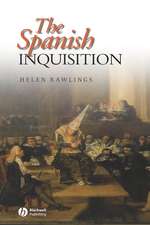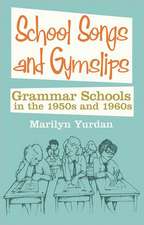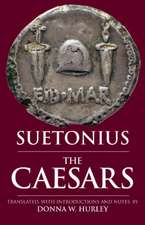Spanish Inquisition, 1478-1614: An Anthology of Sources
Lu Ann Homzaen Limba Engleză Paperback – 14 mar 2006
| Toate formatele și edițiile | Preț | Express |
|---|---|---|
| Paperback (1) | 128.30 lei 3-5 săpt. | +25.42 lei 5-11 zile |
| Hackett Publishing Company – 14 mar 2006 | 128.30 lei 3-5 săpt. | +25.42 lei 5-11 zile |
| Hardback (1) | 328.35 lei 3-5 săpt. | |
| Hackett Publishing Company – 15 mar 2006 | 328.35 lei 3-5 săpt. |
Preț: 128.30 lei
Preț vechi: 138.39 lei
-7% Nou
Puncte Express: 192
Preț estimativ în valută:
24.55€ • 25.70$ • 20.31£
24.55€ • 25.70$ • 20.31£
Carte disponibilă
Livrare economică 17-31 martie
Livrare express 01-07 martie pentru 35.41 lei
Preluare comenzi: 021 569.72.76
Specificații
ISBN-13: 9780872207943
ISBN-10: 0872207943
Pagini: 320
Dimensiuni: 9 x 215 x 139 mm
Greutate: 0.37 kg
Editura: Hackett Publishing Company
Colecția Hackett Publishing Company, Inc (US)
ISBN-10: 0872207943
Pagini: 320
Dimensiuni: 9 x 215 x 139 mm
Greutate: 0.37 kg
Editura: Hackett Publishing Company
Colecția Hackett Publishing Company, Inc (US)
Recenzii
Those of us who teach the history of early modern Spain to undergraduates have long lamented the lack of primary sources in English translation. Lu Ann Homza has gone a long way toward filling that gap with this excellent anthology of sources. Homza provides a judicious selection of documents that chronicle the Spanish Inquisition from its establishment by Ferdinand and Isabella in 1478 to root out crypto-Jews to the expulsion of the Moriscos carried out under Philip III between 1611 and 1614. She recovers many voices from late fifteenth-, sixteenth-, and early seventeenth-century Spain, of defendants, witnesses, politicians, and the ecclesiastical judges whose zeal for religious orthodoxy and correct legal procedure rendered this one of the most famous, if often misunderstood, judicial institutions in European history. Homza begins the volume with a helpful, clearly written introduction that explains the inner workings of the Inquisition and traces its Roman and medieval antecedents. . . . [She] has succeeded in compiling an anthology that is both erudite and accessible, and available at a refreshingly low price. Thus, students as well as teachers and scholars will welcome this significant contribution to the religious and legal history of early modern Spain. --Jodi Bilinkoff, The Catholic Historical Review
With very few exceptions the rich inquisitorial sources collected here have, until now, been available only to specialists with a knowledge of early modern Spanish. The Spanish Inquisition, 1478-1614: An Anthology of Sources fills a gaping hole in the English-language literature, making these previously inaccessible documents available to a much wider reading public. . . . With a strong Introduction and supporting material for each document, this source reader provides a wealth of material for classes on late medieval or modern Europe; Spain and Latin America; Western civilization; or the history of Western religions. This reader will also be valuable to seminars on subjects such as witchcraft, early modern legal history, and women's history. --Benjamin Ehlers, University of Georgia
[Homza's] selections are useful in teaching the historical method, because the texts force us to assess their truth, confront gaps in the documentation, and consider the differences between the religious beliefs of the fifteenth and sixteenth centuries and our own. The book is highly recommended to students of early modern Spanish history and its institutions. --Frank A. Domnguez, Sixteenth Century Journal
With very few exceptions the rich inquisitorial sources collected here have, until now, been available only to specialists with a knowledge of early modern Spanish. The Spanish Inquisition, 1478-1614: An Anthology of Sources fills a gaping hole in the English-language literature, making these previously inaccessible documents available to a much wider reading public. . . . With a strong Introduction and supporting material for each document, this source reader provides a wealth of material for classes on late medieval or modern Europe; Spain and Latin America; Western civilization; or the history of Western religions. This reader will also be valuable to seminars on subjects such as witchcraft, early modern legal history, and women's history. --Benjamin Ehlers, University of Georgia
[Homza's] selections are useful in teaching the historical method, because the texts force us to assess their truth, confront gaps in the documentation, and consider the differences between the religious beliefs of the fifteenth and sixteenth centuries and our own. The book is highly recommended to students of early modern Spanish history and its institutions. --Frank A. Domnguez, Sixteenth Century Journal















